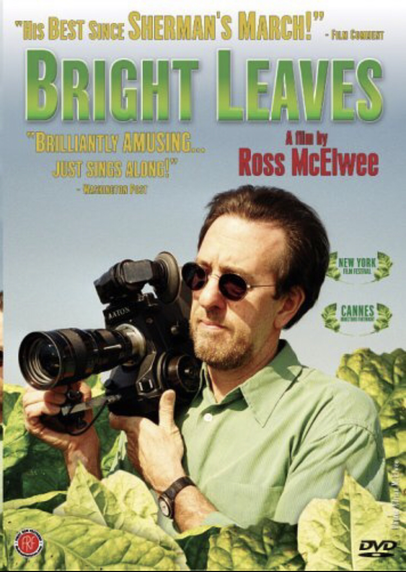 Sam Burnham, Curator A trusted Carolinian put me on film. I had never heard on the film or the filmmaker before. My friend spoke with ease and familiarity about both which left me thinking I had missed something major. So I searched it down and had a late night screening of the 2003 Ross McElwee film Bright Leaves. In the opening scene McElwee tells of a dream of leaves. These aren’t your typical leaves that you rake from your lawn. His description is of some monstrous plants from the age of dinosaurs or something. He and his wife come to an agreement that is his Southern homeland calling for him. She tells him the South is in his blood and that he has been looking a bit anemic lately. McElwee is a Southern expat in New England and Carolina requested his presence. The South does that to her wayward children. The film put me in a similar mindset as the Errol Morris documentary Vernon, Florida. McElwee went out and found ordinary North Carolinians to create the documentary. The cast of characters is not nearly as quirky or odd as the residents of Vernon but it still makes for an authentic homegrown experience. It tells a story or people progressing though history. There are villains and victims, traditions, memories, legends - dubious and factual. 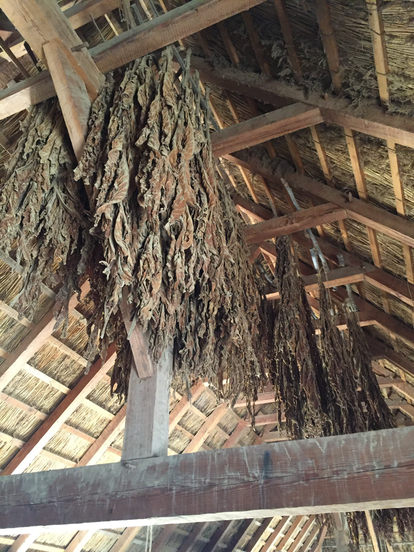 Tobacco: 400 Years in The South Tobacco: 400 Years in The South At the center of it all is the old rivalry between the McElwee family and the Duke family - North Carolina's tobacco barons. The Dukes are well known for their tobacco empire, Duke University, Duke Health, Duke Energy, you know, Duke. The McElwees are known very little these days. Through this film we see evidence that John Harvey McElwee, Ross McElwee's great-grandfather, developed the Durham Bull brand of smoking tobacco and that his foreman stole and then sold the formula to the Dukes. The Dukes then allegedly released the product reflagged as the Bull Durham brand which made them wildly successful. The Duke family remains wealthy in treasure and legacy. McElwee died bankrupt and obscure. What impacted me most about the film is the contrast, the contradictions, that Southern duality that runs throughout the film. It is best represented in Ross McElwee's explanation that he has all the guilt of the effects tobacco has had on the lives of people while enjoying none of the financial benefits of being an heir to the inventor of one of the most successful brands. He sees himself as both a perpetrator and a victim. You just don't get any more Southern than that. Going through Southern History is noticing centuries of this duality. Southerners committed the crime of slavery and were the victims of the crime of Sherman's March. They committed the Indian Removal and then suffered the invasion of the Carpetbaggers. They have grown tobacco and distilled whiskey and suffered the side effects. Now faced with the choice of halting tobacco production or preserving a way of life, people are indecisive. Tobacco isn’t just economics to them. It’s history, it’s aesthetics, it’s their identity. How do you just eliminate such a part of your very self? 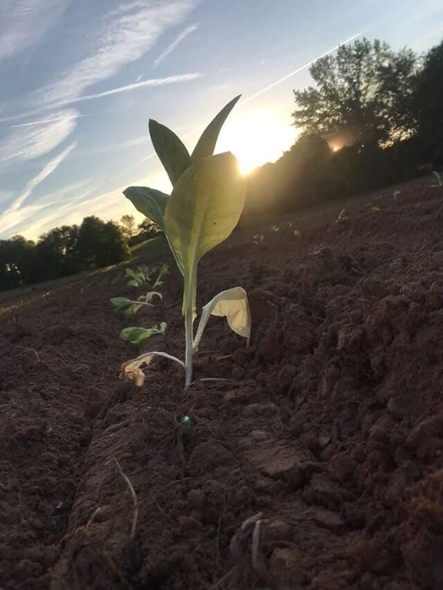 That duality is a part of our existence. Slavery and Jim Crow will never be not wrong. Sherman's March will never be justified. The evils of our past, both given and received, are magnified by a culture that so reveres and bathes in the past. Everything we see today came through all those evils and we know it. It is personified in both this film and the filmmaker. But the film goes further, just as our culture has. McElwee questions his subjects about their tobacco habits. He highlights smokers and his inquiries on their intentions to quit or continue. He highlights the efforts of the Duke empire to ameliorate the illnesses attributed to tobacco use. He covers the 50th Annual Tobacco Festival of Clarkton. It was the last year of it by that name. The "Farmer's Day" moniker was to be adopted the next year. That blatant attempt to cleanse and add something more "acceptable" to the culture has become an everyday occurrence. The South finds itself in a struggle between those who would remove "problematic" elements of our culture and those who would preserve the culture. This struggle is based in that victim/perpetrator duality that no amount of scrubbing will ever eliminate. Regardless of the efforts, The South endures. And so I can confidently finish with recommendation for this gritty and wonderful film. It highlights this corner of The South with stark reality delivered with McElwee's soft-spoken narration. Let it take you for a ride. Let it make you think. Go where it leads you and find yourself in a familiar place.
0 Comments
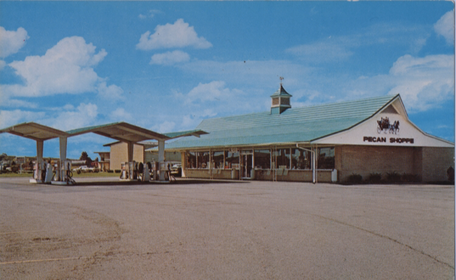 The World Famous Teal Roof The World Famous Teal Roof Sam Burnham, Curator If you’re of a certain age and spent any time at all traveling when you were young, you’ve seen that teal blue roof, those angled covers above the gas pumps, that trade mark red script against a school-bus-yellow sign. I know that on the Coastal plains of Georgia and Florida, you could see a Stuckey’s from at least a mile away. Billboards up and down I-75 announced pecan log rolls, souvenirs, food, gas, and more. Stuckey’s is one of the great stories from the American South. The story begins like the best Southern stories. W.S. Stuckey, Sr. was born on Dodge County farm in 1909. He was just getting his start in adulthood when the Great Depression hit and the bottom fell out of the cotton prices. So in 1931 Stuckey left UGA, right in the middle of his third year of law school to do what he could to help keep his family’s farm going. With food scarce, Stuckey often had to hoist his starving mules back to their feet to plow the fields. There were too few jobs and times were tough. But middle Georgia had an ace in the hole. There was an indigenous crop that was mostly untapped. It was a sleeping giant waiting to be awakened. Pecans. Stuckey begged a local fertilizer dealer for a job doing anything. He was hired to go out and buy pecans. So with $35 borrowed from his grandmother, every dime she had, he set out in a Ford Model A coupe which was unreliable at best. He traveled the countryside John King, a black man who worked on the family farm. On many nights Stuckey and King were so exhausted from work that they slept soundly on the pecan bags. King would eventually own his own Stuckey’s store. From his pecan sales he started his own pecan wholesale business. He bought a pickup truck and started buying his own pecans to sell for processing His philosophy was simple: “You’ve got to be honest with the public. And you’ve got to work. Of course good luck won’t hurt.” It was a philosophy that worked. 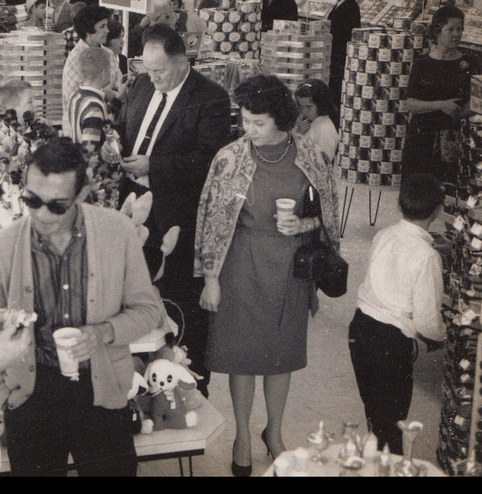 "Every Traveler is a Friend" "Every Traveler is a Friend" In 1937, Stuckey decided to make the most of the winter lull. He used some of his pecan sales profits and open a roadside tourist stand. In this lean-to shack he sold pecans, cane juice, homemade quilts, syrup, cane juice, and cherry cider - all you can drink for a nickel. A Texas housewife once told him “You must be crazy building a candy store in a cotton patch 10 miles from a dried-up town.” The idea hits him. He decided to start a candy store. He busted up in the middle of his wife Ethel’s bridge game and asked her to whip up a batch of pralines...something she had never done before. Inexperience was no deterrent. You can’t sell pralines you don’t have. so Ethel and her sisters Hazel and Pearl worked some magic. Soon they’re turning out candy four times a day in their home kitchen and would walk it 2-3 miles out to the roadside stand where Stuckey had signs posted for marketing and selling the fresh goods. “CANDY MADE FRESH TODAY.” Once Stuckey made enough to open his first real store in Eastman he sold his roadside shack to a farmer and the first ever Stuckey’s became a hen house. Humble beginnings. The company thrives on the concept that “every traveler is a friend.” During the post World War II economic boom, travel became a big part of American culture. Stuckey’s strategically placed their stores along US highways 17, 301, and 1. These were main arteries for the annual snowbird migration. And northerners headed for Florida they were met by those famous teal sloped roofs. Marketing brought them in. Southern hospitality brought them back. We’ve already mentioned that John King came to own his own Stuckey’s store. During segregation Stuckey’s was listed in the now historic “Green Book.” The stores were listed in the publication informing black travelers that they were welcome at Stuckey’s for food, gas, and other road trip necessities. While many locations chose to turn black customers away, Stuckey’s welcomed them. 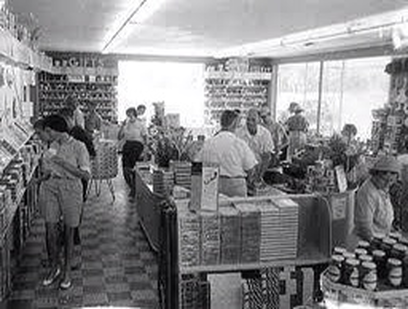 Stuckey's, Circa 1950 Stuckey's, Circa 1950 So the company was on the cutting edge socially. But W.S. Stuckey was also a pioneer in the use of data. He did his own traffic studies on the highways observing the amount of local and out of town travelers. He would drink several cups of coffee and then drive until he needed to make a pit stop. That’s where he would build the next store. Everything from the slope of the roof to which side of the road the store was built on was determined with marketing in mind. He had a plan for everything. His planning was so effective that in less than 20 years, the company had expanded from a lean-to shed in a cotton field to 29 modern stores. The company’s influence began the spread out further and further from Eastman.Stuckey believed in people. He rewarded executives and employees with interest in stores rather than raises. They built stock in the company that way. For example, a secretary making $75 a week would gross $16,000 a year due to her interest in the company. His business model was brilliant: “taking a bunch of good country boys and training them, giving them interest in the store, and having them do the finest job you’ve ever seen.” By 1960 the company based in Eastman, Georgia had 160 stores. Only 10 of those were company owned. Franchisees pulled the wagon and Stuckey saw to it they were looked after. And that is how a man started with a shed in a cotton field and used some innovation and some good old fashioned Southern hospitality to build a roadside mainstay. I won’t steal all of present CEO Stephanie Stuckey’s thunder. She has done extensive research into her family’s business, her heritage, and was kind enough to share some notes from a book she hopes to publish. Perhaps we’ll do a review of it when the time comes. What I’ll definitely do is discuss her new role and the company’s future in the second part of this story. Until then... 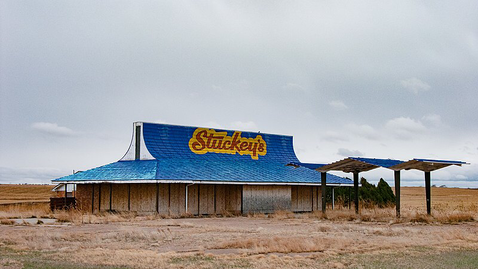 An Abandoned Stuckey’s (photo credit Mike Evangelist license linked) An Abandoned Stuckey’s (photo credit Mike Evangelist license linked) Sam Burnham, Curator Stuckey’s is very much alive. You may not see them in all the places you used to but reports of their demise are quite premature. In fact, what is going on with the company is one of those stories that ABG just can’t get enough of. In the first part of this story we saw that W.S. Stuckey didn’t just build a company. He realized the power of people, his customers and employees and these two groups built the company. Oh he played a part. As a visionary, a marketer, as the kind of manager who trusted and counted on his employees, he built the system. But he couldn’t run every store. He couldn’t greet every customer. He needed his people to do that and he recognized that fact. When a family builds a business it’s their name on the sign out front. When employees hold an interest in the company they want to see it succeed. But these aren’t concepts that modern businesses follow. Sure, you’ll come across Chick-fil -A or Southwest Airlines but for the most part large companies are cutting costs by using as few employees as possible and paying them as little as possible. And when outsiders take control of a family business they don’t see their name on the sign. They see their money on a spreadsheet. And things fall apart. Remember Sears, K-Mart, Toys R Us? 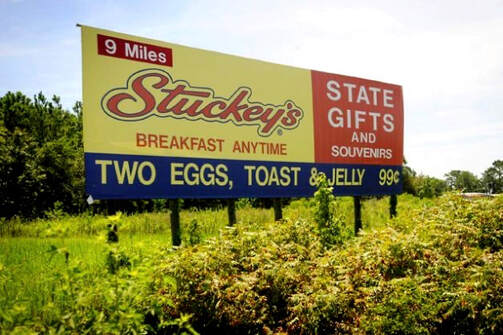 Still the Best Breakfast Deal Still the Best Breakfast Deal Stuckey’s has an ace in the hole though. The family recently regained control of their company. Stephanie Stuckey, granddaughter of founder W.S. Stuckey is now the CEO. She’s a vibrant, energetic leader who has studied her grandfather’s philosophies, methods, and concepts. She knows where all the right decisions were made. She knows what it’s going to take to get those teal roofs back on those highway exits. The best way to promote something is to lead by example, to do it yourself. So if road trips are what you’re promoting, hit the road. That’s exactly what Stephanie Stuckey did. She’s on a quest to visit every store location this year. She wants to meet the people working in the stores. It’s an endeavor to be personally involved in the company And developing relationships rather than being a distant entity emailing out instructions to the rank and file. It’s the approach her grandfather would take. The road trip has another purpose. Many of the old store locations are still in existence. Stuckey is identifying which operational stores need upgrades, repairs, etc. she’s learning which former locations might be salvageable, and what is gone for good. This all leads to the goal of making needed improvements to stores and revamping the franchise program that made Stuckey’s a household name. That name is what’s driving the renaissance. The new CEO is driven to protect the brand. She told me, “that’s my name on that sign.” There was passion in her voice. Even as an outsider I could easily see this is bigger than money or property. This is about legacy and a sense of responsibility to both future and past generations. 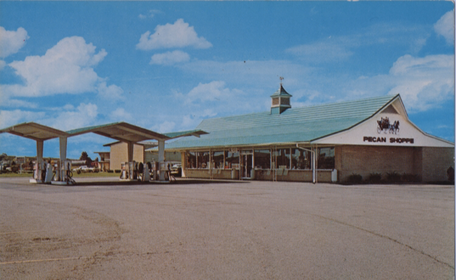 Stuckey's Future is Based in its Past Stuckey's Future is Based in its Past And so she has enacted an aggressive plan to return the company to the place it once was, the place you remember it in. The plan isn’t all that new. W.S. Stuckey built the framework eight decades ago. It’s a system this world is hungry for. For all it’s other wares, Stuckey’s was built on the pecan. So it only makes sense that the pecan is a major part of the plan. At the beginning of September the company announced that it had acquired Georgia pecan company Front Porch Pecans in a merger that made Front Porch’s R.G. Lamar the new Stuckey’s president. This is a move that will benefit both brands. There are plans to for a candy plant, either by purchase or construction. The company’s old plant is still standing but years of disuse have left it unviable. So a modern plant is in the plans. I don’t think you would call what is in the works a small business by the strictest of definitions. With stores spread across the country this is a sizable business. It is, however, a true family business. The business model is exactly the sort of concept we champion. How could we not rally around a granddaughter reviving her grandfather’s struggling business? How could we not adore a people-centered enterprise with nationwide reach from its headquarters in small town Georgia? This is the story of the year as far as I’m concerned. So I’ll continue to watch as Stephanie Stuckey aims to make every traveler a friend, to take a bunch of good country folks and have them do the finest job you’ve ever seen, and to be honest with the public. She’ll have to work. Of course good luck won’t hurt. But that’s the example she saw while visiting Stuckey’s stores as a little girl. I think she’s quite prepared for what lies ahead. |
Sam B.Historian, self-proclaimed gentleman, agrarian-at-heart, & curator extraordinaire Social MediaCategories
All
Archives
November 2022
|






 RSS Feed
RSS Feed
